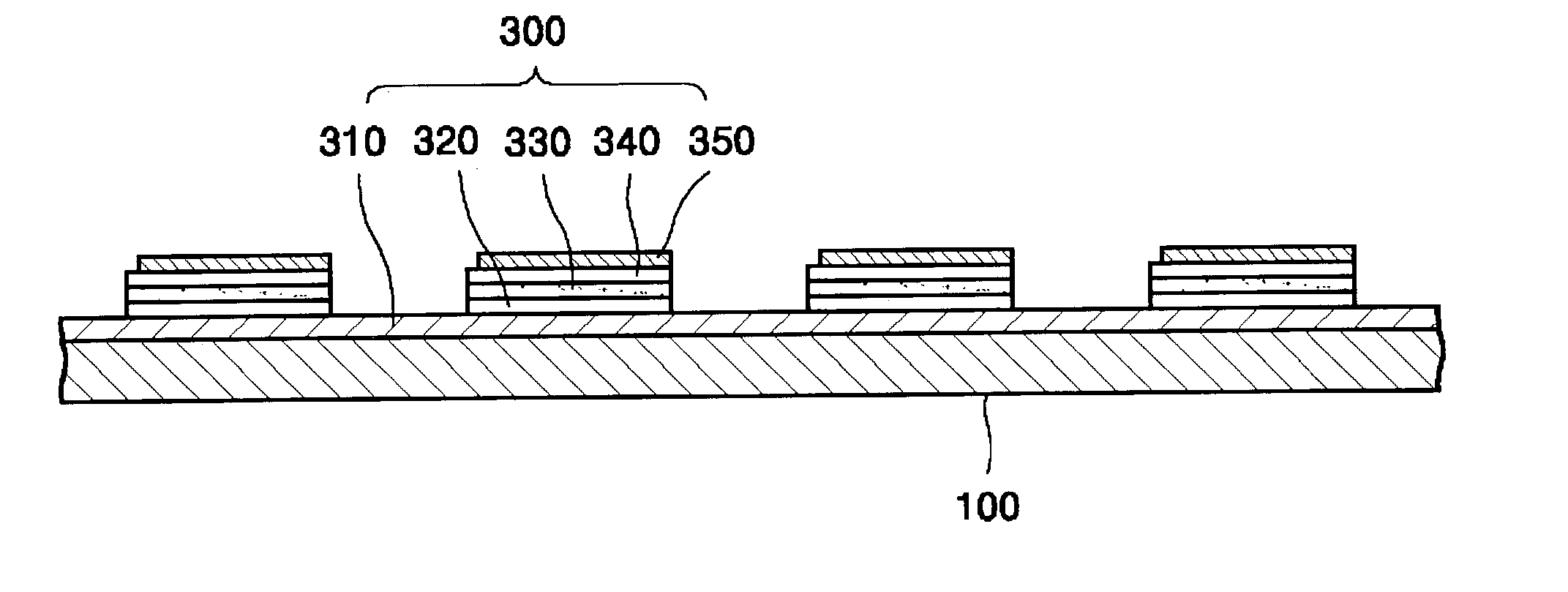Method for encapsulating organic electroluminescent device and an organic electroluminescent panel using the same
a technology of electroluminescent devices and organic materials, applied in the direction of discharge tubes/lamp details, organic semiconductor devices, discharge tubes/lamps, etc., can solve the problems of electroluminescent characteristics sharply degraded, second electrode formed on the organic layer may experience deterioration in performance, and the effect of reducing the efficiency of the second electrod
- Summary
- Abstract
- Description
- Claims
- Application Information
AI Technical Summary
Benefits of technology
Problems solved by technology
Method used
Image
Examples
Embodiment Construction
[0034] An organic EL device was fabricated by sequentially depositing an anode formed of an ITO layer, a hole injection layer formed of IDE406, a hole transporting layer formed of IDE320, an emitting layer formed of CBP:lrppy, a hole blocking layer formed of Balq and a cathode layer formed of aluminum. An inert liquid layer was formed on the cathode layer.
[0035] The organic EL device was evaluated with and without a second sealant by measuring the growth of dark spots, i.e. the non-emmision area ratio, with the passage of time by microscopy. Measurements were taken at a brightness of 100 cd / m.sup.2. Table I shows the non-emmision area ratio measurements for 0 to 45 days for EL devices with and without a second sealant.
1TABLE 1 Non Emission Area Ratio (%) The Without AHS Passage Second 478 XNR 5516 Dennum Fluorinert of Time Sealant LV1 HP 8723L S-65 EGC-1700 Initial 0.1 0.1 0.1 0.1 0.1 0.1 1 day 0.1 0.1 0.1 0.1 0.1 0.1 5 days 0.2 0.1 0.2 0.2 0.3 0.2 10 days 0.5 0.1 0.3 0.3 0.5 0.2 20...
PUM
 Login to View More
Login to View More Abstract
Description
Claims
Application Information
 Login to View More
Login to View More - R&D
- Intellectual Property
- Life Sciences
- Materials
- Tech Scout
- Unparalleled Data Quality
- Higher Quality Content
- 60% Fewer Hallucinations
Browse by: Latest US Patents, China's latest patents, Technical Efficacy Thesaurus, Application Domain, Technology Topic, Popular Technical Reports.
© 2025 PatSnap. All rights reserved.Legal|Privacy policy|Modern Slavery Act Transparency Statement|Sitemap|About US| Contact US: help@patsnap.com



